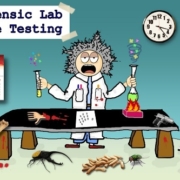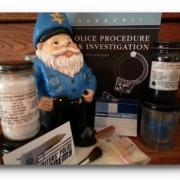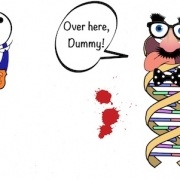How “Stuff” Helps Detectives Solve Crimes
Much like a writer’s intricately plotted tale of fictional murder and the macabre, evidence discovered at actual crime scenes also tells a story. And, with these valuable clues safely collected, bagged, and tagged, detectives set out on their own killer-exposing hero’s journey.
Here’s how homicide investigators use bits and bobs of evidence found at crime-scenes in their quests to solve real-life mysteries.
- Broken/Shattered Glass – fracture analysis can show the type of force used to break the glass, direction and angle of break, and the sequence of breaks and force used.
When packaging broken glass, wrap in paper. Smaller pieces may be placed inside appropriate size cartons.
- Hairs – testing determines if human or non-human, race, body area, stage of decomposition, artificial treatments (hair coloring agents, etc.), drug use.
When packaging hairs, double packaging in paper is best. However, if the hair is completely dry, plastic will work in a pinch. Hairs recovered from different locations must be packaged separately and labeled accordingly. Tape all packaging seams.
- Automobile Pieces, Parts, and Debris (left behind by crash, explosion, etc.) – paint and part analysis for vehicle make and model determination, tire impression (possible make and model), recovery of Vehicle Identification Number (VIN), trajectory analysis of damage by firearms (bullet holes), accelerants used in arson cases, analysis of blood and other body fluids.
- Explosions – examination and analysis of trace evidence, such as hair, fibers, glass, blood, soils, fabric, fingerprints, DNA, tool marks, bone (DNA, human/non-human, age, race, and sex of victim, cross check with missing persons data, etc.).
- Building Materials – examine for possible manufacturer source and/or other common source, such as a specific retailer.
- Cigarettes – DNA analysis from filter end. Latent fingerprint recovery from all areas/surfaces of the product and its packaging.
NEVER use plastic when packaging potential DNA evidence. Plastic encourages the growth of bacteria which could deteriorate or destroy DNA.
- Coded Messages – examine for codes, ciphers, and other efforts at concealment. If needed, agencies can send these messages to a specific FBI email address for analysis. These messages go directly to FBI codebreakers.
- Ropes, Strings, and Other Cordage – examine for possible source matching.
- Shredded Paper – examine for latent prints. Possible reconstruction of documents.
- Tapes – examine for hairs and other fibers that may be attached to the “sticky side.” Check for and develop fingerprints. Match end-cuts or fractures with possible sources.
To print the stick side of tapes, use:
- Sticky-side powder
- Alternate black powder
- Ash gray powder
- Gentian violet
- Tools – examine for trace evidence (hairs, fibers, spills, human tissue and fluids, etc.), latent prints, transferred paint and other building material for possible source-matching.
- Weapons – examine for blowback material (flesh, blood, brain matter, etc.), fingerprints, trace evidence, serial numbers, ammunition type and comparisons, tool marks, gunshot residue, marks (nicks, scratches, dents, etc.), comparison to broken fragments (broken knife blades), etc.













As always, Lee, terrific information! I just got an idea that might help me write out of a corner I thought I was in.